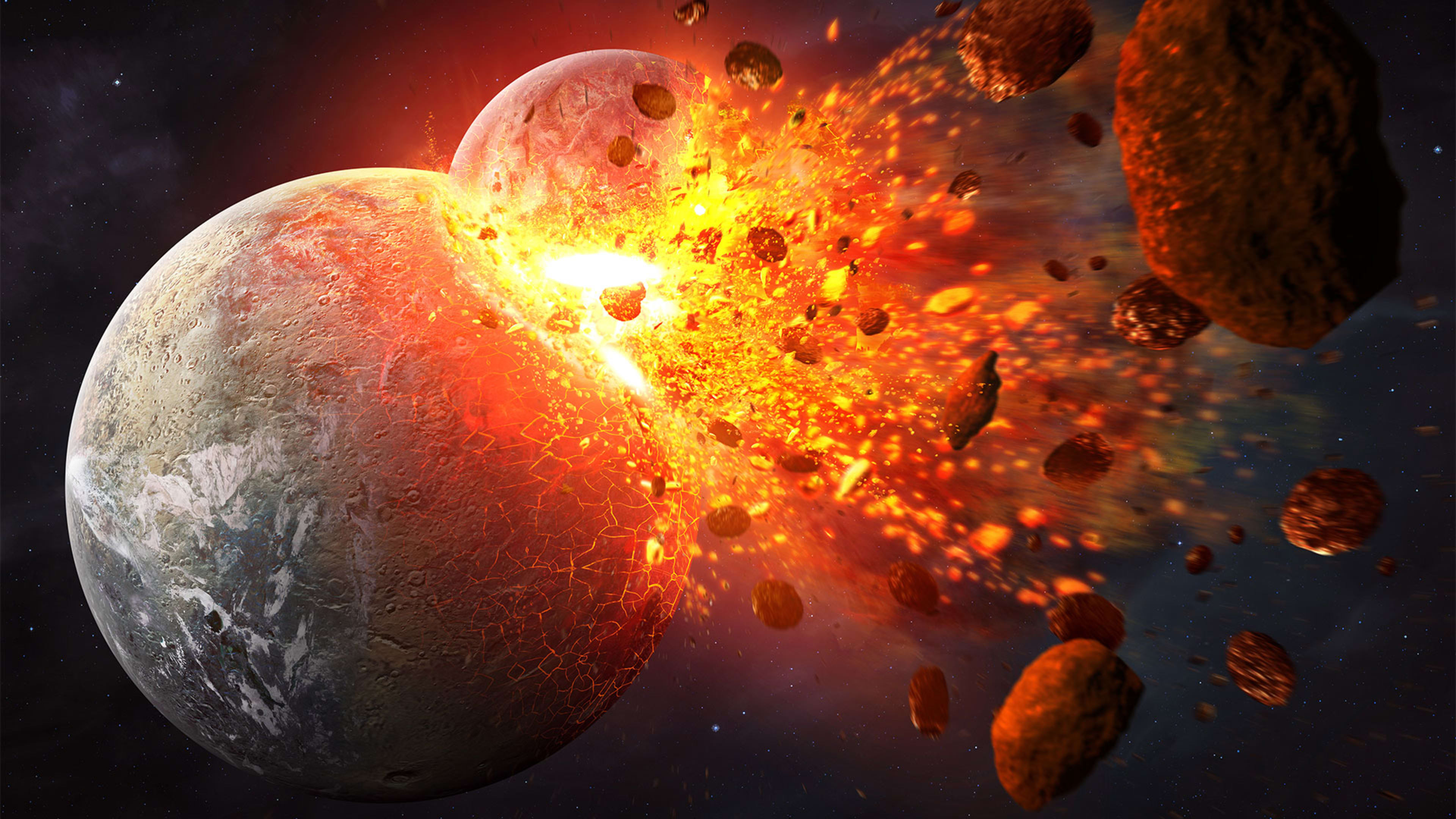Our solar system was a violent place 4.5 billion years ago. As planetesimals were forming out of a disk of gas and dust surrounding our sun, they began to collide. This process led to the formation of the larger protoplanets that would become our solar system.
During this chaotic period in our local neighborhood, Theia, a Mars-sized protoplanet, may have struck the Earth with such force that impact debris from this collision created the moon. Now, scientists think that pieces of Theia may still be present to this day within our planet’s mantle.
Theories of moon formation
This scenario is part of what’s called the giant-impact theory, and it’s the most widely accepted view of how the moon formed. This collision would have sent impact debris flying out into space, and the moon eventually formed from this mixture of gas and molten rock. The moon, therefore, is made up of both material from proto-Earth and Theia.
It’s important to note that this is the prevailing theory for moon formation, but it’s not the only one. Some scientists posit that the moon and Earth formed at the same time from the same planetary disk, while others think that the Earth’s gravity captured the moon.
But now, scientists may have found support for the existence of Theia and the giant-impact theory, located, improbably, within the Earth’s mantle.
Pieces of Theia as LLVPs
Deep within the Earth’s solid lower mantle, underneath Africa and the Pacific Ocean, are two mysterious continent-sized features. Scientists call these large low shear velocity provinces (LLVPs), and they’re characterized by below-average seismic wave velocities (basically, how fast a seismic wave travels through them) and are distinct in composition from the areas surrounding them. They’re denser than other parts of the Earth’s mantle.
Now, a newly published paper in Nature posits that these LLVPs might in fact be pieces of Theia, buried deep within the Earth. A team led by Qian Yuan ran computer simulations showing that, if a massive impact between Earth and the protoplanet Theia did indeed occur, smaller pieces of Theia’s mantle could have broken off. These would have sunk deep into the mantle and clumped together above the Earth’s core into the LLVPs that we can detect in the present day.
It’s an intriguing theory and, what’s more, it’s likely not unique to Earth if this is the case. Giant impacts between protoplanets are common in the formation of early solar systems, which means that other planets would likely have LLVPs within their mantles as well.
Recognize your brand’s excellence by applying to this year’s Brands That Matter Awards before the final deadline, June 7.
Sign up for Brands That Matter notifications here.
